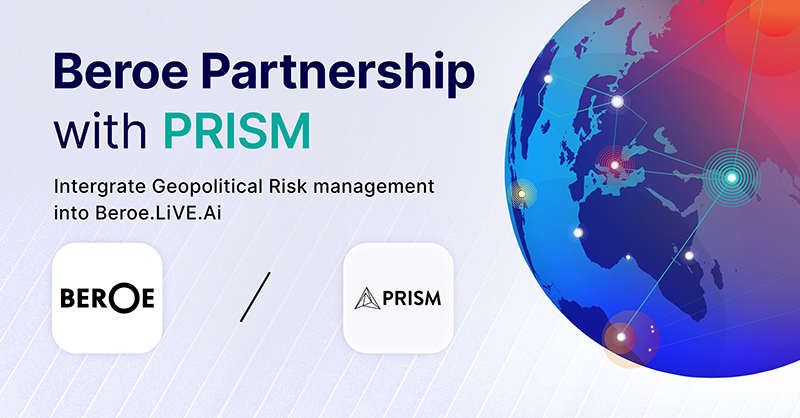Point of Sale Materials Market Currently Growing at a CAGR of 12.57 Percent, Says Beroe Inc
Source: PR Newswire
RALEIGH, North Carolina, October 8, 2019 - The global Point of Sale Materials (POSM) has already crossed a valuation of $29.88 billion and is growing at a steady rate till 2022 according to Beroe Inc., a procurement intelligence firm. The global POS display market is likely to grow at a CAGR of 5.7 percent during the forecast period.
The POSM market is growing at the fastest rate in North America, at a rate of 3.5-4 percent, followed by Europe at 3-3.5 percent and APAC at 1.78-2.8 percent. High market maturity regions include the US, Canada, the UK, Germany, Brazil, France, China, Australia, Italy, and Spain, while medium market maturity regions are parts of Eastern Europe, Peru, El Salvador, and Venezuela.
https://www.beroeinc.com/category-intelligence/point-of-sale-materials-market/
Beroe, which is based in North Carolina, further stated that procurement experts can access this report on its recently launched market intelligence platform Beroe LiVE: live.beroeinc.com
Growth of retail store formats in the developing markets and development of modern retail in tier-2 and tier-3 cities, especially in the developing markets in Asia and LATAM, will increase the demand for POSMs. Suppliers are investing more in technology to improve their capabilities, thereby adding more value with respect to the services offered, driving the growth of the POSM market. However, consumer preference for online stores may increase further in the future, reducing the significance of other retail formats resulting in lesser demand for POS materials in the future.
Major end-users for POSMs are Retail, CPG, FBT and pharmaceutical companies. Integrating Bluetooth technology into the digital point of sale ecosystem lets businesses engage customers like never before. Other prominent trends in the POSM market include online POP management software, Print on Demand, e-catalog solution, digital reporting systems, and adoption of digital POP displays.
Key Findings:
- Global suppliers are enhancing their geographic and service capabilities to attract large buyers. In North America, buyers prefer to work with strong regional players, since the supply market is more matured and sophisticated compared to any other markets.
- Critical cost components are raw materials and manufacturing costs which constitute about 50 percent of the total cost. Cost-saving factors are supplier consolidation, bulk buying and sourcing from end-to-end service providers.
- Brexit would result in border controls and restrictions for goods/materials that cross the UK-EU border. Post-UK’s exit from the EU, suppliers would look at setting up additional hubs in EU markets. This would lead to an increase in operational cost, and the cost associated with setting up operations apart from legal and taxation costs.
- The POP display has significant growth in the global markets, especially in FBT, cosmetic and personal care segments. Store formats such as hypermarkets, supermarkets, and convenience stores are likely to increase (especially in emerging markets) and are thus anticipated to increase the global POP display market over the forecast period to 2025.
- The ability to tag content and tag individual media players brings a new level of customization to digital POSM, taking what would otherwise be a very complicated content management task and streamlining the process, such that anyone can determine where and when desired content will appear.
The research methodology adopted for the report included:
- Experts with twenty years of domain experience
- Interaction with buyers
- Inputs from supply chain partners
Full-service outsourcing is the most commonly adopted model, in which consolidation of requirements is possible with global suppliers. Large buyers are also using bundled outsourcing (strategy, design + rest of the services) especially in heterogeneous markets, where the buyer wants to recalibrate the message for the brand. The hybrid practice is followed among service providers based on geographies and campaign requirements but is not a widely adopted model.
The report also includes:
Market Analysis:
- Global Market Maturity
- Global Industry Trends
- Global Drivers and Constraints
- Regional Market Outlook
- Industry Outlook
- Porter’s Five Forces Analysis: Developed and Emerged Markets
- Innovation in Retail
Index-Based Pricing:
- Index-Based Pricing
- External Sources for Indices
Supply Analysis:
- Supply Market Outlook
- Key Global and Regional POSM Suppliers
- Key Global POSM Suppliers in Retail
- Suppliers: Service Portfolio
- Supplier Shortlisting
- Key Supplier Profiles
Procurement Best Practices:
- Sourcing Models
- Sourcing Models: Comparative Analysis
- Sourcing Models: Pros and Cons
- Pricing Models: Comparative Analysis
- Sourcing Practices: Retail Industry (Signage)
- KPI and SLA Components
About Beroe Inc.:
Beroe is the world's leading provider of procurement intelligence and supplier compliance solutions. We provide critical market information and analysis that enables companies to make smart sourcing decisions—leading to lower costs, greater profits and reduced risk. Beroe has been providing these services for more than 13 years and currently works with more than 10,000 companies worldwide, including 400 of the Fortune 500 companies.
To learn more about Beroe Inc., please visit: http://www.beroeinc.com
Media Contact:
Rob McMurtrie
rob.mcmurtrie@beroe-inc.com
Related News
View all
Beroe Makes Strategic Investment in Forestreet, Strengthening AI Capabilities and Driving Procurement Intelligence Innovation

Beroe introduces on-demand geopolitical risk analysis through PRISM enabling C-Suite to protect against ongoing supply chain disruptions
